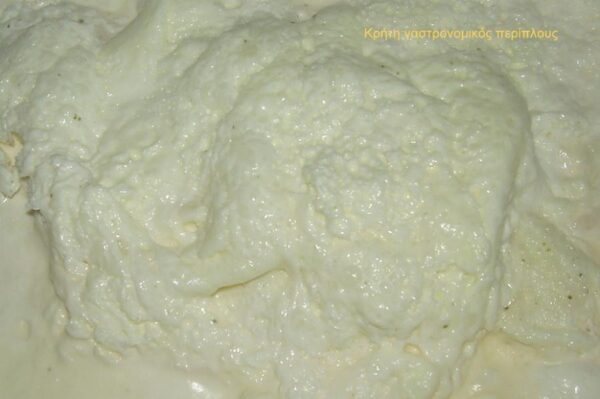Staka and stakovoutiro are produced from tsipa. The raw material for stakovoutiro, tsipa is the crust produced by a boiled mix of sheep and goat milk when it is left uncovered for a number of hours, as is village-style sheep yoghurt. The milk tsipa, or crust, is similar, but perhaps thicker and does not turn sour.
To prepare it we put the tsipa in a cooking pot that has a heavy base and stir it with a wooden spoon over very low heat. When it begins to liquefy, we slowly add salt and flour, continuing to stir. As it starts to thicken and to separate from the bottom of the pot it will begin to produce the butter, which we empty into a bowl while continuing to stir so long as it continues to yield butter. The cream that remains once it stops yielding butter is the staka and the butter we have collected is the stakovoutiro.
Staka is added to numerous Cretan dishes, giving them a unique flavor. It is superb on fried eggs and many Cretan meat pita.
The stakovoutiro has many uses. It has a stronger smell than other animal butters, but that smell is characteristically pleasant. A small spoonful of stakovoutiro makes roasts and pasta unique and is irreplaceable for gamopilafo.




